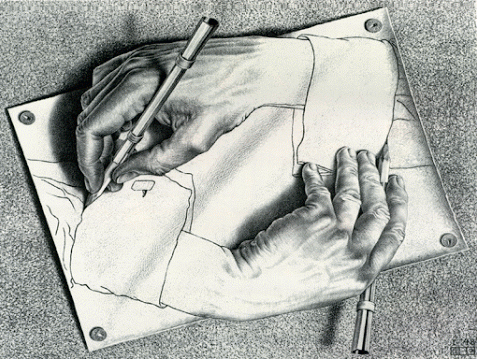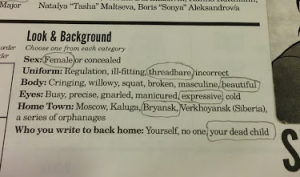(originally published on Imaginary Funerals, February 12, 2014)
So I keep starting to write my first post for Imaginary Funerals, and I keep coming up against this… thing. I used to talk a lot on my old, and now-defunct blog about immersion. I spent a lot of time and focus on ways to understand and articulate emotional agenda to get play groups through the foreplay of social experience building and into the sweet spot with play. I talked about wanting to diversifying play experience and design… at the time I didn’t consider that the stuff I was talking about was particularly radical. But after a while, from the reaction I was getting, it became clear that it was – because the very notion that there can be a legitimate and inclusive multiplicity of roleplaying experience is a threat to a dominant paradigm that inherits power and legitimacy by policing the way we play.
Back then I was writing because I was seeking community. I wanted collaboration and idea exchange with people interested in building forward with me. I still am – very much – but I’m less naive than I used to be. I understand better now that we – all of us – need our games very badly and that people in general respond to diversification with scarcity fear:
- If people want to make games for someone not me, there won’t be games for me.
- If there is no one legitimate game, than what I am doing is not legitimate.
- I don’t like what you’re doing and I don’t want it to reflect on me – our hobby is already vulnerable.
- I need a sense that my experience is authentic, please don’t take that away from me.
- I need to feel like people are with me, and by making radically different things, you are telling me that you are not with me.
I understand those fears. I am not neither mocking them nor trivializing them. If you feel that sense of scarcity, I do not feel that you are weak. In fact, if you do feel it and can recognize, admit and own it, I think you are incredibly powerful and resilient.
But while I too feel scarcity, while I empathize that fear, I don’t buy into the idea that it should stop us from diversifying. Not diversifying just privileges who it is that feels scarcity. And while I think that the emotional response is real, I reject the idea that it is accurate. Making different kinds of games to support different kinds of play and different kinds of people shouldn’t de-legitimize the kinds of play that already exist. It should learn from them and give back to them and in doing so, legitimize them further. In my world building out creates opportunity, potential and community – if we want it to.
So if these ideas are political whether I want them to be or not, let me go all-out political with a god damn manifesto:
- Fuck stratification. Make play personal.
- Our creative desire is to make a multiplicity of experience and a diversity of play.
- We come to make games that fit our needs and desires of play.
- We hope that we can play our games enthusiastically and harmoniously beside others engaging enthusiastically with games that fit their needs and desires.
- We are happy to cheer on others who are designing games that fit their needs (even where they don’t fit ours) and we hope that they are wildly successful doing so.
- We consider our play objectively neither better nor worse than the way others play.
- We consider play experience to be both subjective and deeply personal.
- We do not assume that difference means dysfunction.
- We will not declare other kinds of play wrong by nature.
- We only challenge the way others choose to play where there are clear moral or ethical reasons for doing so (e.g. player abuse, social injustice).
If you like to play at cons with kinky mechanics – power to you!
If you like to play fifteen year campaigns in legacy systems and playgroups – power to you!
If you like to larp alone and in the dark – power to you!
If you like to play queer bleed games – power to you!
If you like to dress up and fight with boffer swords in the woods for 15 days straight – power to you!
Whether you stand up or sit down, play for laughs or play for art, in homage or for transgression, in illusion or in transparency, in railroad or distributed freeform, by immersion or from a distance, dress in costume, don’t, or even go naked – if you play what you enjoy and enjoy what you play, POWER TO YOU!
That is all.
Now that thing is taken care of, I can get on to writing knowing you and me are clear with each other.



